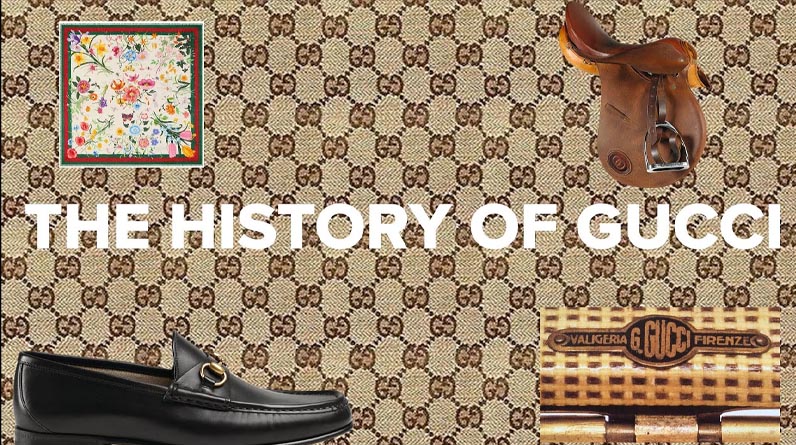Have you heard about Gucci? Surely you have, in this article, you will know about Gucci’s history. Gucci is an Italian fashion brand that was established in 1921 by its namesake, Guccio Gucci. This makes Gucci one of the oldest Italian fashion firms that are still in business today. In the beginning, the company was an equestrian supply and baggage manufacturer, catering to the wealthy upper classes of Italy with its high-end travel products and horse gear. This is a common beginning for historic design businesses.
Initially, the company’s primary focus was on leather products, but it also made fine knitwear and silk goods, as well as footwear and purses. Cotton was the only material that could be used to make the label’s items during the second world war because of the severe shortage of other materials caused by the war effort. It was around this time that the label debuted its recognisable “Double-G” monogram, as well as the Gucci stripe, which consists of two green stripes that are separated by a single red bar. Today, the Gucci stripe is considered to be an icon.
When Guccio Gucci first began his business, it is highly unlikely that he ever imagined that his fledgling luggage business would one day become an institution that is so deeply ingrained in popular culture. But ever since it was established in Florence in 1921, Gucci has amassed a vast collection of trademarks that are instantly recognisable the world over. The interlocking GG logo, the bar-and-bit belt buckle, the bamboo-handle handbag, and the ever-present loafer are all elements that have contributed to the brand’s unprecedented level of success in mainstream culture. No other Italian label in the annals of fashion history has been able to achieve this level of success.
History
Aldo, Guccio’s eldest son, was the one in charge of laying the framework for the epic expansion of the company during his father’s leadership. He was a flamboyant businessman who was responsible for transforming the company into the go-to destination for accessories for Europe’s burgeoning jet set. At the close of the 1960s, the organisation counted among its patrons not only Queen Elizabeth II but also Elizabeth Taylor.
In the late 1960s, Aldo Gucci’s son Paolo continued the history of Gucci’s success being passed down from father to son by ushering in the company’s next great age with the launch of a clothing line. In the early 1970s, Gucci began to introduce the svelte silhouettes, fur-lined coats, and shining satin lapels that are now considered to be the brand’s signature elements.
The prominence of the brand served as both a boon and a burden for the company. The identity of the record company had been soiled by aggressive licencing by the early 1980s. Meanwhile, the Gucci family eventually lost control of the company in 1993 as a direct result of the vicious feuding inside the family.
Modern Day Gucci
When Tom Ford, then a young designer, took over as creative director of the company he co-founded in 1994, he sought to build his vision on the legacy that Paolo had left behind. The now-famous Tom Ford aesthetic, which the designer later referred to as “sexy, sensuous, fuck-me garments,” exuded power and grandeur and brought back vivid memories of the company’s heyday for the consumers. Gucci quickly established itself as a major participant on the international stage.
The French holding company that is now known as Kering had owned a portion of the label since 1999. In 2004, much to Ford’s dismay, Kering, which had owned a portion of the label since 1999, took managerial control of the label. After his departure, the brand was left with a very large pair of alligator loafers to fill. After rescuing the company from the brink of financial ruin, Ford increased its value to $4.3 billion. Enter the accessory designer Frida Giannini, who has a reputation for being somewhat unassuming: In 2006, after having been a member of the Gucci design stable for close to five years, she was promoted to the position of chief designer, where she is responsible for menswear, womenswear, and accessories. Her nearly 10-year rule was marked by dwindling results, and in 2015, her former subordinate Alessandro Michele succeeded her in her position as creative director of the fashion house. The reversal of luck that Gucci has experienced in recent years has been nothing short of remarkable.
Read More Like This Here

